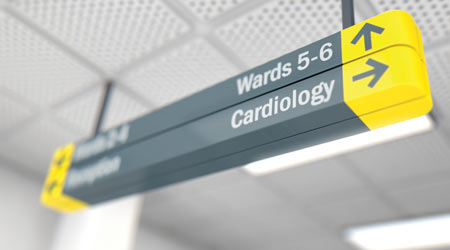 One overlooked issue related to changes in facility operations involves signage. Managers tend to assume that signage already in place is sufficient for wayfinding and identification.
One overlooked issue related to changes in facility operations involves signage. Managers tend to assume that signage already in place is sufficient for wayfinding and identification.Changes in Operations and Code Requirements Affect Facility Wayfinding
Facilities, tenants and regulations change regularly. These strategies can help managers ensure signage keeps up with the changes
Institutional and commercial facilities are no strangers to change. Operations change. Tenants change. Requirements change. Regulations change. Most maintenance and engineering managers have developed procedures to handle this churn relatively easily, but things occasionally fall through the cracks simply because nobody thinks of them.
One often-overlooked issue involves changes that affect facility signage. Managers tend to assume that the signage already in place is sufficient and do not consider the way changes in operations and code requirements have resulted in new requirements.
The result can include confusion for occupants and visitors to fines for code violations. If managers are to avoid these issues, they must conduct a regular review of each facility’s signage needs. Two major areas managers must consider when reviewing sign requirements are wayfinding and code requirements.
Where to begin
The process starts with a review of the facility’s exterior. Federal, state and local regulations to a great extent dictate what can or must be installed. In general, all facilities must have address numbers, building numbers or some other acceptable means of building identification visible from the street that fronts the building. Additional signage might be required at rear alleyways or entrances.
Regulations also dictate the placement, size and visibility of the signage, but the importance of exterior signage goes well beyond code requirements. Exterior signage impacts the visibility of the facility to potential customers. Signage that is damaged, showing its age or not easily legible can harm the image of the facility and the facility’s occupants.
The same issue applies to signage that directs the flow of traffic around and into the facility. Properly placed traffic control signs direct visitors and occupants to appropriate parking areas, entrances and loading docks. Speed limit and stop signs can improve safety for vehicles and pedestrians. Fire lane and other parking restriction signs help maintain safety and security.
The best way to review exterior signage is to approach the facility as a first-time visitor would, starting on the street. Does signage adequately identify the facility so a visitor in a car has time to slow down and safely turn at the entrance? Once on the property, are directions for where to go and park clear? Are pedestrian walkways clearly identified? Do signs direct them to the building entrance? If signs are nonexistent or temporary, it is time to upgrade.
The review also must look at factors such as the image signage it projects. A facility with inconsistent or poorly laid out signage reflects negatively on operations. Poorly installed signage also can increase maintenance costs, particularly if signs are installed in positions where they are readily damaged.
Related Topics:















